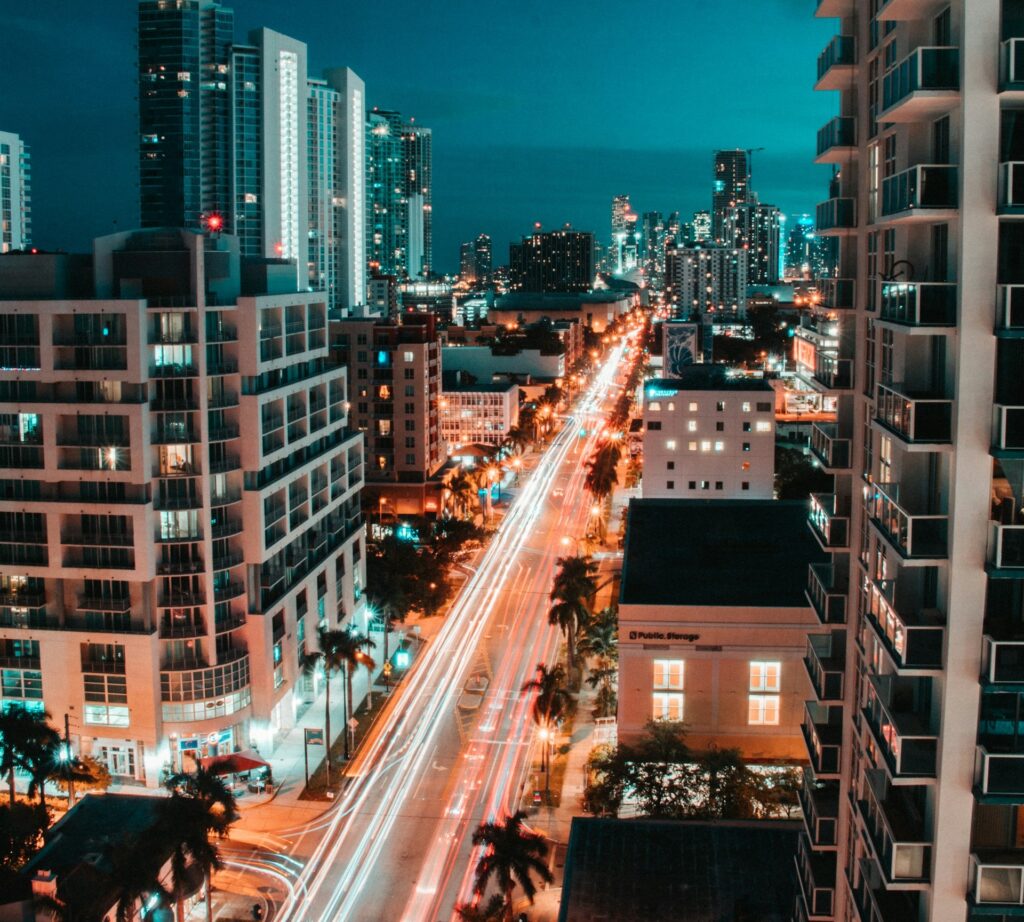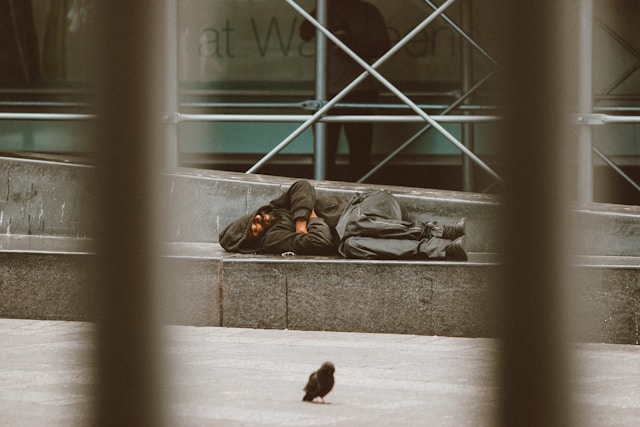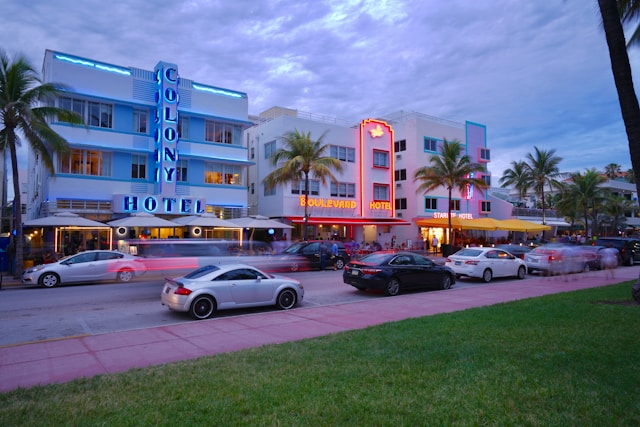This article provides a comprehensive overview of the pros and cons of living in Miami, Florida. It explores various aspects of the city’s lifestyle, from its vibrant cultural diversity and world-class beaches to its high cost of living and challenging traffic. Miami’s appeal lies in its year-round warm weather, outdoor recreational activities, and buzzing nightlife, but potential residents must also contend with its humidity, hurricane risks, and crowded tourist seasons. By examining the advantages and disadvantages in detail, this article aims to offer insights for anyone considering moving to or living in Miami, helping readers make informed decisions about whether the “Magic City” is the right fit for their lifestyle.
Table of Contents
Pros of Living in Miami
1. Rich Cultural Diversity
Miami’s cultural diversity is one of the most defining features of the city. It serves as a melting pot for various communities, predominantly Latin American. Over 70% of the population identifies as Hispanic or Latino, bringing influences from countries like Cuba, Colombia, Venezuela, Argentina, and the Dominican Republic. The result is a vibrant mix of traditions that permeates daily life.

This diversity is most evident in Miami’s neighborhoods, like Little Havana and Little Haiti, where cultural authenticity shines. From local markets offering Latin spices and goods to annual festivals like Calle Ocho, the cultural richness is hard to miss. Residents have access to authentic foods, arts, music, and social experiences that are unique to this international city. Additionally, this cultural blend creates an open-minded and welcoming atmosphere, making Miami a great place for those who love exploring different perspectives and experiencing a multicultural lifestyle on a daily basis.
Also read: Luxury Real Estate Surge Anand Khubani’s $100M Miami Beach Purchase
2. Access to World-Class Beaches
Few cities in the world can boast the same easy access to breathtaking beaches as Miami. With the Atlantic Ocean on one side and Biscayne Bay on the other, the city is home to some of the most beautiful and diverse coastal stretches. South Beach, famous for its white sands and lively atmosphere, attracts both tourists and locals looking for a fun day out or a glamorous night under the stars.
For those who prefer something quieter, there’s Crandon Park or Bill Baggs Cape Florida State Park, where you can escape the crowds and enjoy a more tranquil beach experience. The access to beaches also means you can partake in various water sports like paddleboarding, jet skiing, surfing, and scuba diving. On weekends, many residents take advantage of boat rentals or fishing charters, making the beach lifestyle an integral part of living in Miami.
3. Year-Round Warm Weather
Miami’s tropical climate offers sun lovers a dream scenario: warm weather nearly every day of the year. The city enjoys about 250 sunny days annually, which is a huge perk for those who love outdoor activities. In winter, when most parts of the country are bundled up, Miami’s average highs hover around a comfortable 76°F, allowing residents to enjoy the outdoors year-round.
The warm weather creates a casual, laid-back lifestyle where beachwear is acceptable attire, and outdoor dining is a daily delight. However, the heat in summer can climb into the 90s, paired with high humidity, which some people might find overwhelming. Nevertheless, for sun enthusiasts, the prospect of enjoying summer-like conditions in January can be irresistible. While Miami does have a distinct hurricane season, its generally predictable climate makes it a year-round destination for those who prefer mild winters and consistent sunshine.
Also read: Who Lives On Indian Creek Island Miami?
4. No State Income Tax
Florida is one of the few states that do not impose an individual income tax, and Miami residents benefit greatly from this policy. Whether you’re a high earner or someone looking to retire comfortably, the absence of state income tax can make a significant difference in your financial planning. Without state income taxes biting into your paycheck, you have more disposable income for personal investments, travel, or other lifestyle expenses. For retirees, this makes Miami an attractive option, as many people rely on savings and investment income to live.
Business owners also benefit, as the tax environment is conducive to entrepreneurship and growth. However, it’s important to note that other taxes, like property and sales taxes, may be higher than the national average. But for many, especially those from states with high income taxes, the savings are substantial, making Miami a financially appealing place to live.
5. Vibrant Nightlife and Entertainment
Miami’s nightlife is legendary, making it a haven for those who enjoy staying out late and socializing. Whether you’re into upscale nightclubs like LIV at the Fontainebleau or prefer more intimate, low-key lounges, Miami’s diverse options cater to all tastes. South Beach is the epicenter of the city’s nightlife scene, but there are also numerous rooftop bars and speakeasies spread throughout neighborhoods like Wynwood and Brickell.

Miami’s nightlife isn’t just about clubs; it also offers a rich array of live music venues, from Latin salsa and reggaeton beats to jazz clubs and indie bands. The city also hosts global events like Ultra Music Festival, attracting people from all over the world for a weekend of top-tier electronic music. Whether you’re a night owl or just enjoy the occasional social outing, the nonstop party atmosphere of Miami adds an exciting element to the lifestyle.
6. Outdoor Recreation and Active Lifestyle
Miami’s outdoor scene extends beyond its beaches and warm climate; it also offers a variety of outdoor recreational activities. From kayaking in Biscayne Bay to cycling along scenic trails like the Rickenbacker Causeway, there’s always something to do for the outdoor enthusiast. The city is also a gateway to the Everglades, where residents can take part in airboat tours, bird watching, or hiking through unique wetlands.
Miami’s waterways are ideal for boating, paddleboarding, and fishing, allowing residents to enjoy activities both on and off the shore. For fitness lovers, outdoor yoga classes, beach volleyball games, and running paths make staying active an enjoyable part of everyday life. The prevalence of outdoor activities contributes to the city’s laid-back, health-conscious lifestyle, and the abundance of parks and recreational facilities means there’s no shortage of options for staying active and exploring Miami’s natural beauty.
Cons of Living in Miami
1. High Cost of Living
While Miami offers a luxurious lifestyle, it comes at a cost. The city’s cost of living is significantly higher than the national average, particularly in terms of housing. Real estate prices in popular neighborhoods, such as Brickell, Coral Gables, or South Beach, are steep, making it difficult for many to afford homeownership. Rent prices are also on the higher side, and they’ve only been increasing due to high demand from both residents and investors.
Beyond housing, everyday expenses such as groceries, dining out, and utilities tend to be more expensive compared to other U.S. cities. While the lack of a state income tax does alleviate some financial pressure, it doesn’t fully offset the costs of living in a desirable neighborhood. For many, finding affordable housing in Miami means compromising on space or living further from the city’s prime areas, which can lead to longer commutes.
2. Traffic and Limited Public Transportation
Miami’s traffic problems are well-known, and they can be a significant downside for those commuting daily. The city’s reliance on cars as the primary mode of transportation often leads to gridlock, especially during rush hours. Popular areas like Downtown Miami, Wynwood, and South Beach can become heavily congested, and parking is notoriously difficult to find. For those who prefer to avoid driving, Miami’s public transportation system, while available, leaves much to be desired.

The Metrorail and Metromover systems cover limited areas and are not extensive enough to serve the entire city effectively. As a result, many residents find themselves dependent on rideshare services like Uber or Lyft, which can become costly over time. While there are ongoing efforts to improve public transportation and reduce traffic congestion, as it stands, navigating Miami’s roads remains a challenge for many residents, especially newcomers.
3. Humidity and Hurricane Risk
Miami’s tropical monsoon climate offers plenty of sunshine, but it also comes with high humidity levels that can be uncomfortable, particularly in the summer months. For those unaccustomed to the sticky, muggy air, the oppressive heat can be draining and lead to higher energy costs due to constant air conditioning. Additionally, Miami is situated in a hurricane-prone area, which poses risks every year from June to November.
Also read: Most Expensive Neighborhoods In Miami
The city has a robust hurricane preparedness infrastructure, but residents still have to contend with the stress of potential evacuations, property damage, and interruptions to daily life. Hurricanes can also lead to expensive home insurance premiums, adding to the cost of living. While Miami has shown resilience to many storms, the risk remains an ongoing concern, and preparing for hurricane season is a necessary part of life for anyone living in this region.
4. Insects and Bugs
Living in a warm, tropical environment like Miami means you’ll inevitably encounter bugs—and lots of them. Mosquitoes, in particular, can be a year-round nuisance, but they become especially active during the hot and humid summer months. In addition to mosquitoes, Miami residents often have to deal with palmetto bugs, a type of large cockroach that is notorious for flying into homes during the wetter seasons. Pest control is a necessity for most Miami households, and keeping windows and doors sealed is crucial to prevent bugs from entering.
The prevalence of insects also means that outdoor activities, especially at dawn and dusk, may require some preparation, like wearing bug spray or covering up. For people who aren’t used to tropical climates or have an aversion to insects, this can be a significant drawback, though many residents eventually adapt to this aspect of Miami living.
5. High Rates of Homelessness
Miami, like many major cities in the U.S., grapples with a high rate of homelessness, particularly in certain downtown and tourist-heavy areas. While the city has implemented various programs to address this issue, it remains a visible and ongoing challenge. Areas like Overtown and parts of Downtown Miami have seen concentrated populations of homeless individuals, which can affect the perception of safety and cleanliness in these neighborhoods.

Some residents may find themselves uncomfortable or concerned when walking in areas where homelessness is prevalent. Additionally, while the city has made efforts to assist the homeless population, it remains a complex social issue that impacts the city’s image and quality of life. Addressing homelessness in Miami is an ongoing effort, and residents should be aware that it’s a reality in various parts of the city, even in areas frequented by tourists.
6. Crowded Tourist Seasons
Miami is a hotspot for tourists, and while this boosts the local economy, it can also lead to some significant downsides for year-round residents. The city attracts millions of visitors annually, especially during the winter months when people escape colder climates to bask in Miami’s sunshine. Spring Break season, in particular, sees an influx of young partygoers, transforming popular spots like South Beach into crowded, noisy, and sometimes chaotic areas.
For those who live in tourist-heavy neighborhoods, the constant flow of visitors can become overwhelming, leading to longer lines at restaurants, higher prices for entertainment, and congested streets. While tourism brings vitality to the city, it can be frustrating for residents who have to navigate these crowds regularly. Planning daily activities around peak tourist seasons becomes a necessity, and some locals prefer to avoid popular attractions entirely during the busiest times of the year.
Information Table
| Category | Description |
|---|---|
| Pros | |
| Rich Cultural Diversity | Miami is a melting pot of Latin American, Caribbean, and other international cultures, offering a rich blend of food, art, and music. |
| Access to World-Class Beaches | Residents enjoy daily access to Miami’s stunning beaches with clear waters and white sands, perfect for outdoor activities like swimming, boating, and sunbathing. |
| Year-Round Warm Weather | With over 250 sunny days a year, Miami’s warm weather is ideal for outdoor living, even during the winter months. |
| No State Income Tax | Florida’s tax policy makes Miami attractive, as residents do not have to pay state income taxes, offering financial benefits and more disposable income. |
| Vibrant Nightlife and Entertainment | Miami is known for its diverse nightlife scene, with upscale clubs, live music venues, and world-class entertainment such as festivals and music events. |
| Outdoor Recreation and Active Lifestyle | From water sports to hiking and cycling, Miami offers a wide range of recreational activities for an active and healthy lifestyle. |
| Cons | |
| High Cost of Living | Housing and everyday living expenses are higher than the national average, especially in popular neighborhoods, making affordability a concern for many. |
| Traffic and Limited Public Transportation | Traffic congestion is common, especially during rush hours, and public transportation options are limited, leading to long commutes for many residents. |
| Humidity and Hurricane Risk | Miami experiences extreme humidity in the summer and is at risk for hurricanes from June to November, leading to increased home insurance costs and potential disruptions. |
| Insects and Bugs | Living in a tropical climate means dealing with mosquitoes, palmetto bugs, and other insects, particularly during the rainy summer months. |
| High Rates of Homelessness | Certain areas of Miami have high rates of homelessness, which can affect the perception of safety and cleanliness in various neighborhoods. |
| Crowded Tourist Seasons | Miami’s popularity as a tourist destination leads to overcrowding, especially during winter months and Spring Break, impacting residents’ daily lives and leisure options. |



